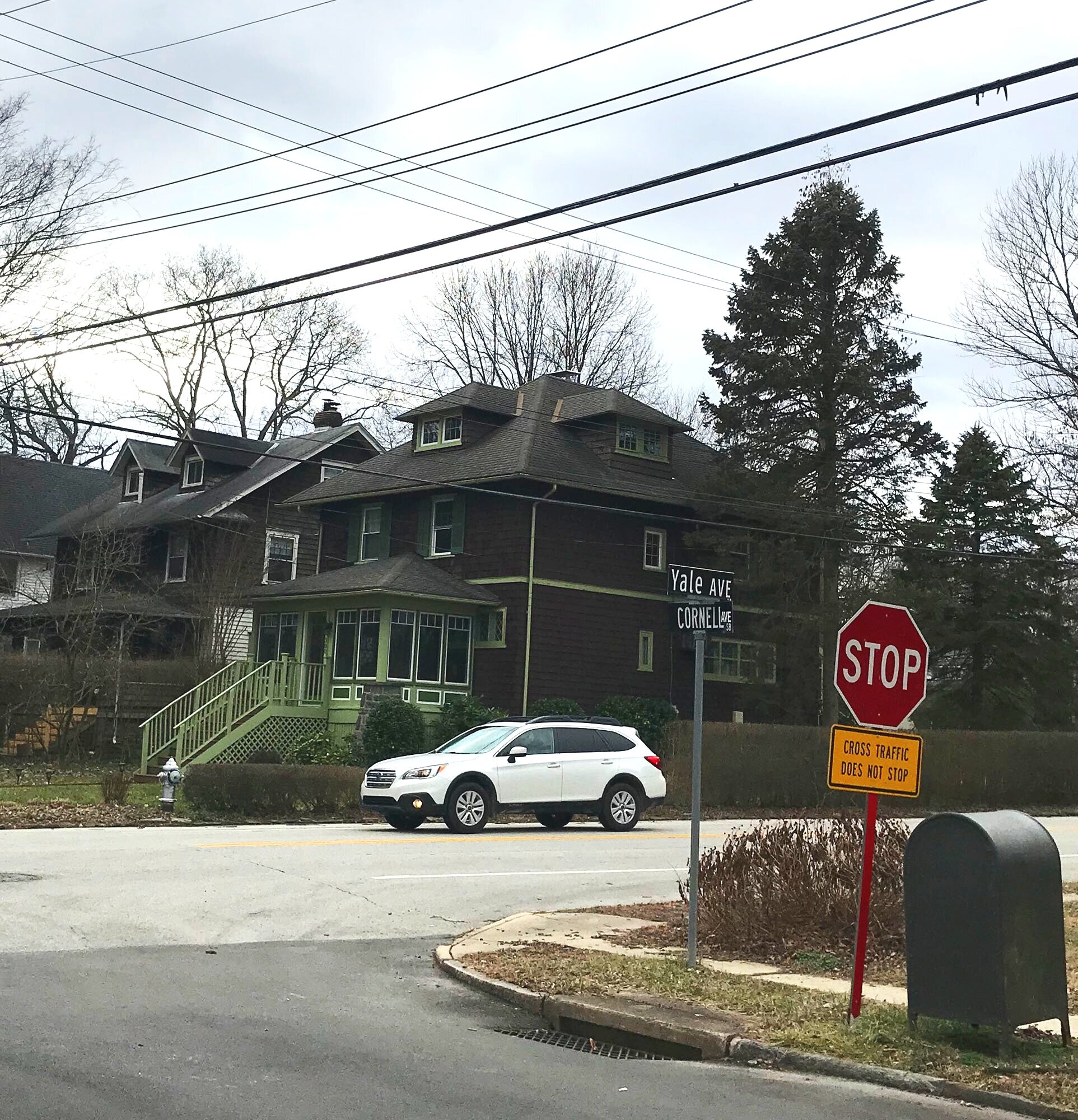Scrutiny for Yale Avenue
The intersection of Yale and Cornell avenues was once again a subject of discussion at Swarthmore’s Public Safety Committee meeting Monday night. Photo: Rachel Pastan
At the meeting of the Swarthmore Borough Council Public Safety Committee on Monday, January 27, the conversation revolved around two intersections on Yale Avenue: the intersection of Yale and Cornell, and the intersection of Yale and Chester Road.
Several borough residents came to the meeting to voice their concerns. Swarthmore Police Chief Ray Stufflet said that there were six accidents at the intersection of Yale and Cornell avenues between January 1, 2019 and January 27, 2020. Of these, four were reportable, meaning that either someone was injured or one of the vehicles had to be towed.
Swarthmore resident Cherilyn Scanlon said that her daughter had been in an accident at the intersection. Driving north on Cornell, she nosed out to see if it was safe to cross and was hit by a car driving east on Yale. “I think a stop sign would be fantastic,” Scanlon said. “Or speed bumps.”
Eric Iversen, who lives at the corner, told the committee about the many accidents he had witnessed and heard over the years. “I continue to pick up car debris in our yard,” he said.
No Easy Answers
The committee discussed a number of possibilities to address the problem. Borough Manager Jane Billings said that a previous review by the borough engineer had suggested that a stop sign at the intersection might be problematic. It could, for instance, cause eastbound traffic on Yale to back up into the intersection of Yale Avenue and Chester Road, which could be hazardous.
Speed bumps were also suggested. Billings said that in order to install speed bumps, which are considered a traffic calming measure, a mandatory traffic study would need to find that traffic volume and speeds on that stretch of road reached some specific level. Given her experience of similar studies, such a finding was unlikely, Billings said.
Committee Chair Jill Gaieski steered the discussion toward the intersection of Yale Avenue and Chester Road, one block west of Cornell. Chief Stufflet reported that there have been ten accidents at that intersection since January 1, 2019, of which two have been reportable. Several people recounted stories of people they knew who had been badly injured in accidents there. Others pointed out how tight the intersection is, with no room for left turn lanes.
“It’s outgrown its traffic,” Chief Stufflet said.
“What would it take to bring it up to the times?” Gaieski asked.
Committee member Betsy Larsen said that expanding the intersection would mean buying property from the owners on the corners.
Billings wondered whether replacing the current stop lights with overhead lights would help.
“An overhead light takes us from the 1940s to at least the 1990s,” Larsen said.
Other ideas included a crosswalk, bump-outs (places where the sidewalk is widened to narrow the roadway), and a new sidewalk along the south side of Yale between Chester Road and Rutgers Avenue.
Taking a Broader View
After the conversation circled around the same problems, suggestions, and challenges, borough resident Al Federico, a traffic engineer, proposed taking a more holistic look at Yale Avenue. Rather than looking at problems piecemeal, intersection by intersection, he suggested “a larger assessment of the entire section” from Chester Road to Swarthmore Avenue. “Yale Avenue begs to be remade,” he said.
Billings agreed. “It makes more sense to look at the whole thing.” She suggested that a grant program from the Transportation and Community Development Initiative could possibly fund an engineering study.
The committee agreed to take the suggestion to fund a study of the whole stretch of Yale to Borough Council at its next work session on February 3.
Some residents were disappointed, however, at the prospect of a timeline that could stretch on for years. “Is there anything we could do in the meantime?” Iversen asked.
After a bit more conversation about possible temporary half-measures, it seemed clear that there was not. As chair Gaieski concluded, “We want to do it right.”




